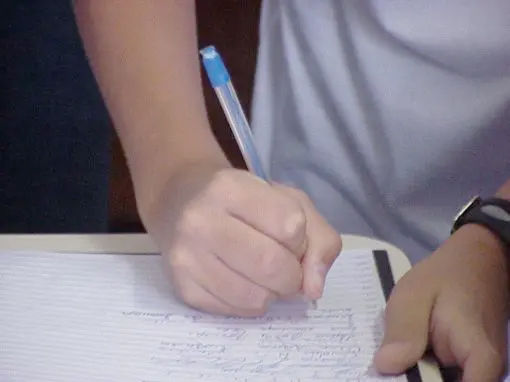Every parent wants to give their child the best start to school, but we often get caught up with rote learning of numbers, colours, letters and shapes, hoping this will give our child a step-up on the way to formal education. It is more valuable however, to know that your child’s brain and body are ready to learn. Both physically and neurologically, our bodies and brains need to be ready to learn.
To be ready to write easily, children need to have the following:
- Good tactile and body awareness so they can control their fingers automatically.
- Posture and balance developed to the extent that they can sit still easily and concentrate on their work.
- Auditory perception and processing skills so they understand the instructions given by their teacher.
- The ability to move their eyes smoothly from what they are copying to what they are writing.
- The ability to ‘picture’ the letters they are writing in their mind (visualisation).
- The fine motor skills to manipulate the paper and pencil.
- The hand-eye coordination to write correctly what their eyes have seen.
- Temporal awareness; an internal understanding of time, to be able to do the allotted task in the time allocated.
When all of this is in place, our children can easily take on the task of writing. However, if one or more of these factors are not fully developed, then a child may potentially struggle with the writing tasks at school.

Lots of movement experiences give us an internal awareness of both sides of the body. This allows children to move all their body parts independently of each other, crucial to managing in a classroom environment. By school entry, children should have a preferred hand firmly established and be able to cross their midlines. Parents may not be aware that young children have a midline – an ‘invisible line’ down the middle of their bodies, from their heads to their toes. Children need to be able to cross over this midline easily with arms, legs and eyes without twisting their bodies or heads. This ability to cross the midline repeatedly and without difficulty indicates that children are lateralised and are ready for higher-order cognitive thinking. This is crucial for success at school and sport.

Image credit to https://iahp.org/
Children who are not fully lateralised at school risk encountering learning difficulties. If their eyes do not cross smoothly across the midline, they cannot easily follow words across a page without losing their place, leading to reading difficulties. Writing will also be problematic, as their preferred hand will not cross fluently from one side of their body to the other. This will result in children twisting their paper and sitting awkwardly to avoid crossing the midline, or instead swapping the pencil from one hand to the other as they reach the middle of the page.
Not being lateralised will also affect children’s physical prowess and sporting ability. Cross pattern movements – movements that involve crossing the midline and the two sides of the body working well both individually and in unison – will be jerky and uncoordinated and balls skills a nightmare.
All image credits to KindyRoo Singapore, unless otherwise stated
Don't miss out on our articles! You will find them useful somehow, from parenting to exam preparation tips to best deals and free trial classes! Subscribe to our newsletter to receive updates on articles and best deals!

